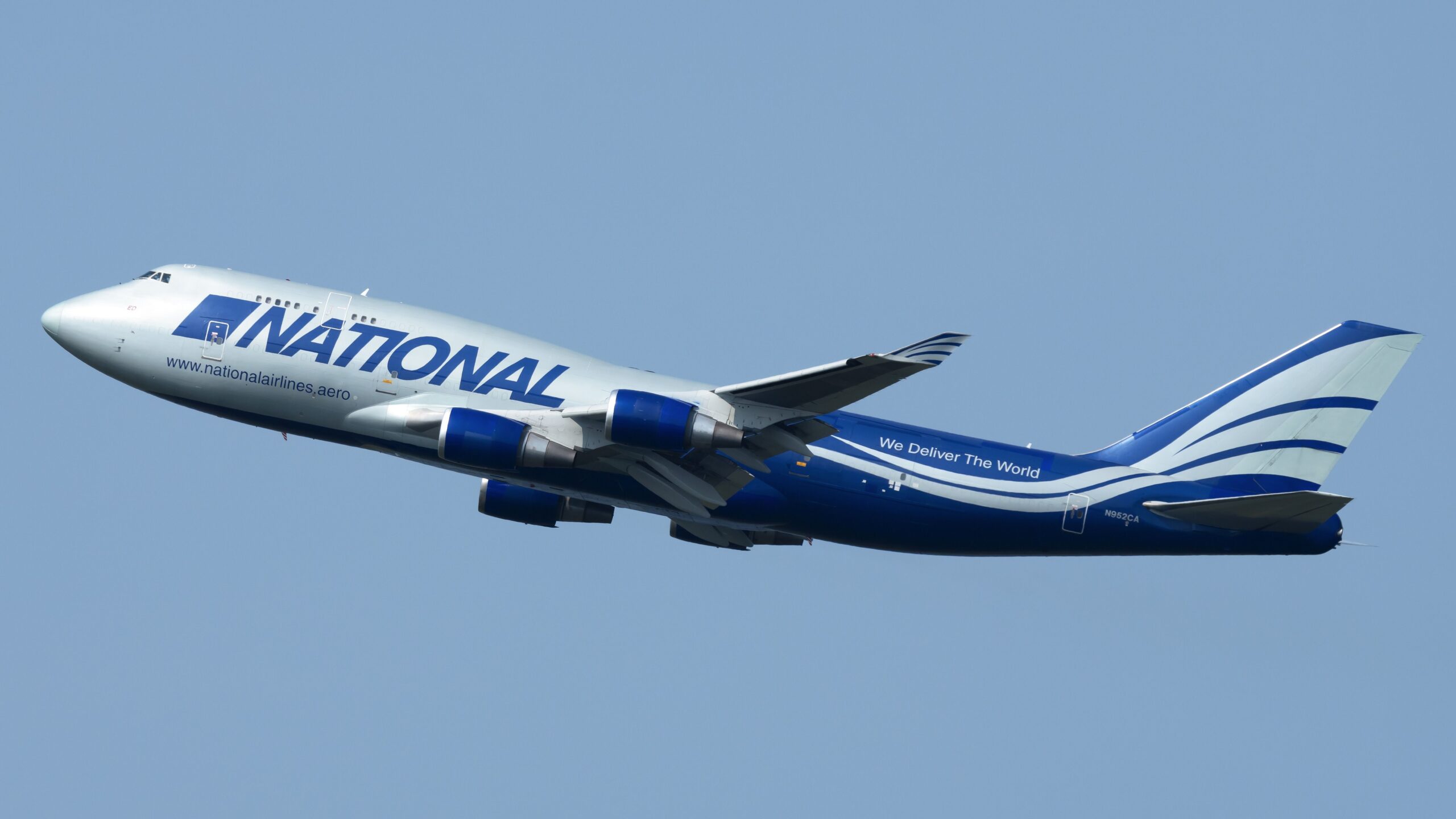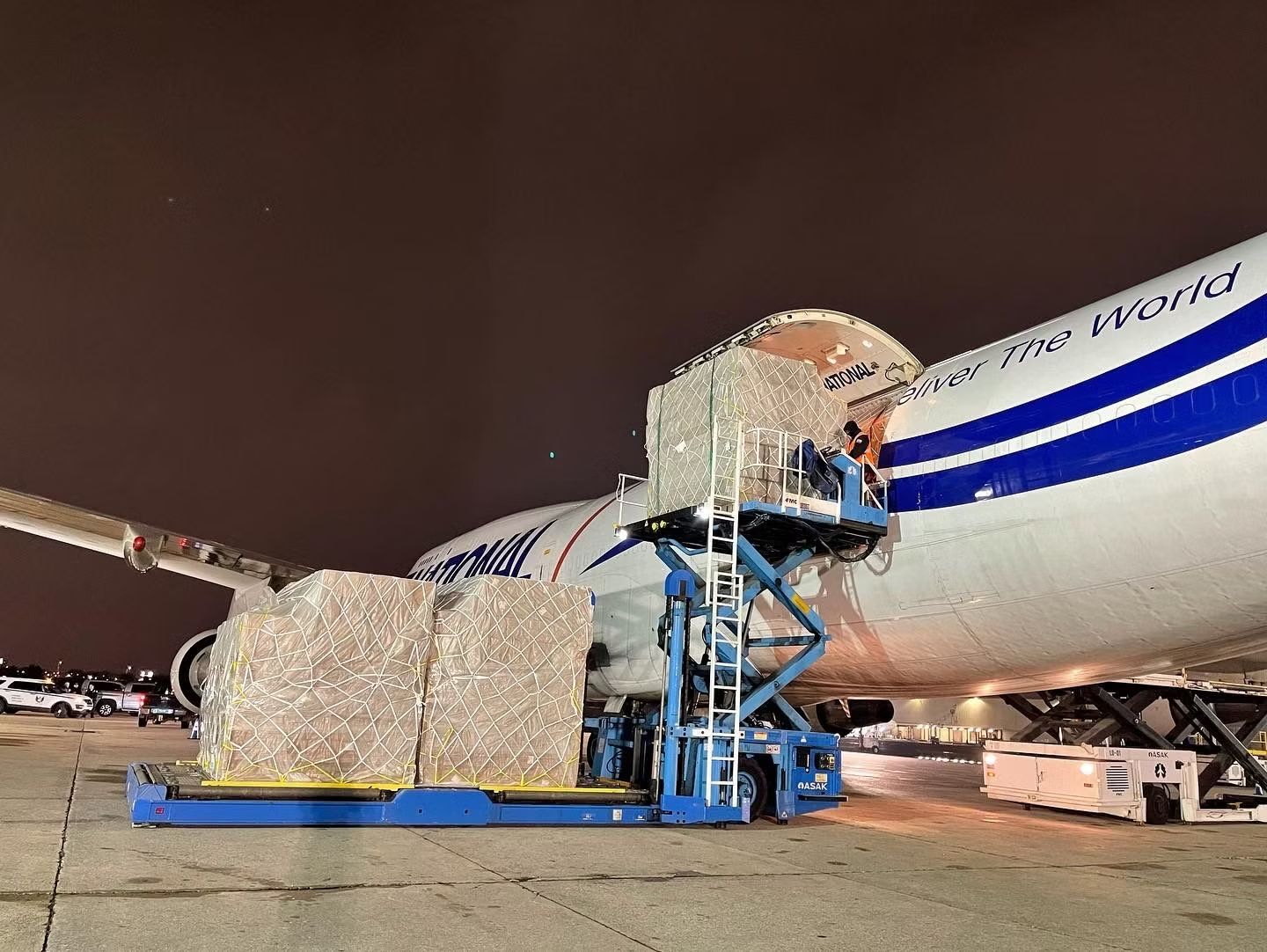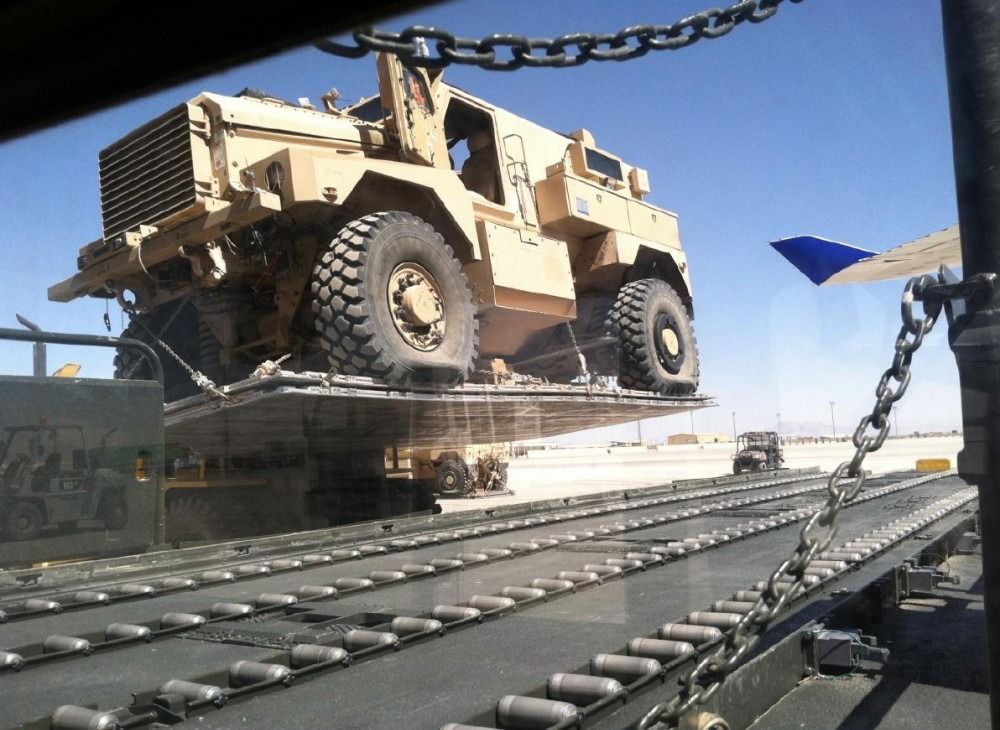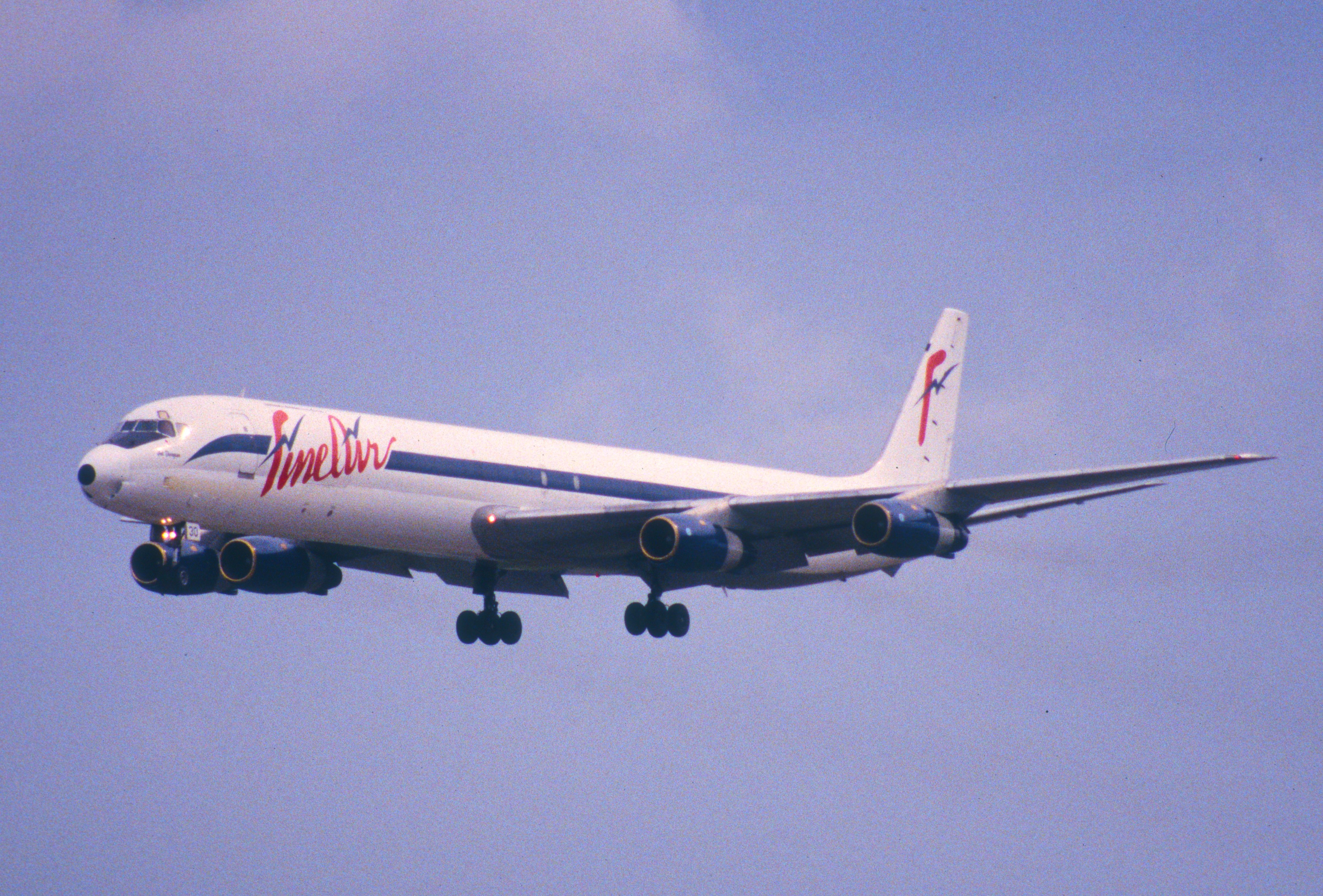Summary
- National Airlines Flight 102 crashed in Afghanistan while transporting heavy armored vehicles. The plane stalled and exploded into a fireball upon impact, resulting in the deaths of seven US crew members.
- The crash was attributed to inadequate procedures for securing cargo, as one of the vehicles came loose during takeoff and caused severe damage to the aircraft’s components.
- The incident highlighted the need for improved safety procedures and training for loadmasters handling special cargo, as similar cargo shifts have caused plane crashes in the past.
On April 29th, 2013, a National Airlines Boeing 747-400 operating on behalf of the USAF’s Mobility Command crashed shortly after taking off from Bagram Airfield (OAI) in Afghanistan. Flight 102 was transporting five heavy armored vehicles from Camp Bastion in Afghanistan to Dubai World Central Airport (DWC), with a refueling stop at Bagram, when the accident occurred.
Part of a multi-leg flight
The flight originated in France, at Châteauroux-Centre “Marcel Dassault” Airport (CHR), with its first stop being Camp Bastion, Afghanistan. It would then continue to the Dubai World Center at Al Maktoum in the United Arab Emirates. However, because no permission was obtained to fly through Pakistani airspace, the flight was rerouted to Bagram to refuel and then continue to the UAE.
As established, five Mine Resistant Ambush Protected (MRAP) armored military vehicles were among the flight’s most notable cargo. The load comprised two MRAP All-Terrain Vehicles (M-ATVs), weighing 26,455 lbs (12 tonnes) each, and three larger Cougars, weighing 39,683 (18 tonnes) each. All in all, the Boeing 747-400BCF had 207,496 lbs (94.1 tonnes) of cargo onboard.
The plane stalled while climbing through 1,200 feet
After a refueling stop in Bagram, the aircraft took off at 15:30 local time and was climbing through 1,200 feet when its nose suddenly rose up. The sudden movement caused the plane to stall and bank to the right, only leveling off just before hitting the ground. On impact, the aircraft exploded into a giant fireball.
Sadly, this sudden and violent touchdown resulted in the deaths of four pilots, two mechanics, and a loadmaster, with all seven being from the US. There were no injuries on the ground. At the time of the accident, a thunderstorm was brewing, shifting the wind by 120 degrees, leading people to speculate that it may have played a part in the crash.
Piloting the aircraft was 34-year-old Brad Hasler from Trenton, Michigan. Hasler worked for National Airlines for nine years and had over 6,000 flight hours, including 440 on the Boeing 747. The first officer on the flight was Jamie Lee Brokaw of Three Rivers, Michigan. He had 1,100 flight hours on the Boeing 747.
An ex-Air France converted freighter
The aircraft involved in the crash was a twenty-year-old Boeing 747-400 that bore the registration N949CA and the name Lori. According to data from ATDB.aero, it began its career as a passenger-carrying aircraft at Air France in 1993. After more than a decade serving the French flag carrier, it was converted for cargo use in 2007 and joined Air Atlanta Icelandic two years later.
It had been with National Airlines for just under two years at the time of the crash, having moved to the carrier in July 2011. At that point, it had racked up a total of 72,728 hours across 9,706 flight cycles, according to data from ch-aviation.
Photo: National Airlines
When the 747 stopped flying as a passenger aircraft, an international firm called Telair was responsible for converting it to a freighter. It converted the jumbo’s main deck into a cargo deck and fitted the floor with rails to move and hold unit load devices (ULDs) – the containers used to load luggage and other cargo on certain aircraft. However, given the size of the MRAPs, they had to be loaded on specially built palettes and secured with several chains and straps.
Catastrophic load shift
When transporting cargo, especially of this size, the loadmaster must ensure it is tightly secured. The National Airlines 747 completed the first leg of the trip from Camp Bastion to Bagram without reporting any issues with the load. However, with the load not properly secured, the next leg ended catastrophically. Investigators concluded that the cargo onboard the aircraft had come loose during takeoff, which ultimately caused the jumbo jet to crash.
In their reports, the NTSB and the Afghanistan Civil Aviation Authority agreed that one of the five armored vehicles being transported had not been properly stored. When it came loose, it rolled backward, crashing through a rear bulkhead, severely damaging hydraulics and components of the horizontal stabilizer, namely its jackscrew. This made it impossible for the pilots to regain control of the aircraft.
In conclusion, the NTSB blamed National Airlines’ inadequate procedures for securing and restraining special cargo loads. This resulted in the loadmaster failing to properly tie down and prevent the cargo from moving during the flight. Another contributory factor was the FAA’s inadequate oversight of National Airlines’ handling of special cargo loads.
Improvement to safety procedures
Like all other incidents, the crash of Flight 102 was an important learning moment for the aviation industry at large. The NTSB recommended revising guidance material related to special cargo handling and for loadmasters to undergo more training. However, this was not the first time a cargo shift brought a plane down.
In August 1997, a Fine Air McDonnell Douglas DC-8-61F crashed shortly after takeoff from Miami International Airport (MIA) when improperly secured freight pallets shifted in the cargo deck. Ten years prior, a Belize Air International Boeing C-97G Stratofreighter crashed in Mexico City similarly. It was transporting horses, and during takeoff, they panicked and started running around, shifting the aircraft’s center of gravity.
What do you think of this story? Let us know in the comments!
Sources: ATDB.aero, Aviation Safety Network, ch-aviation


.jpg)


